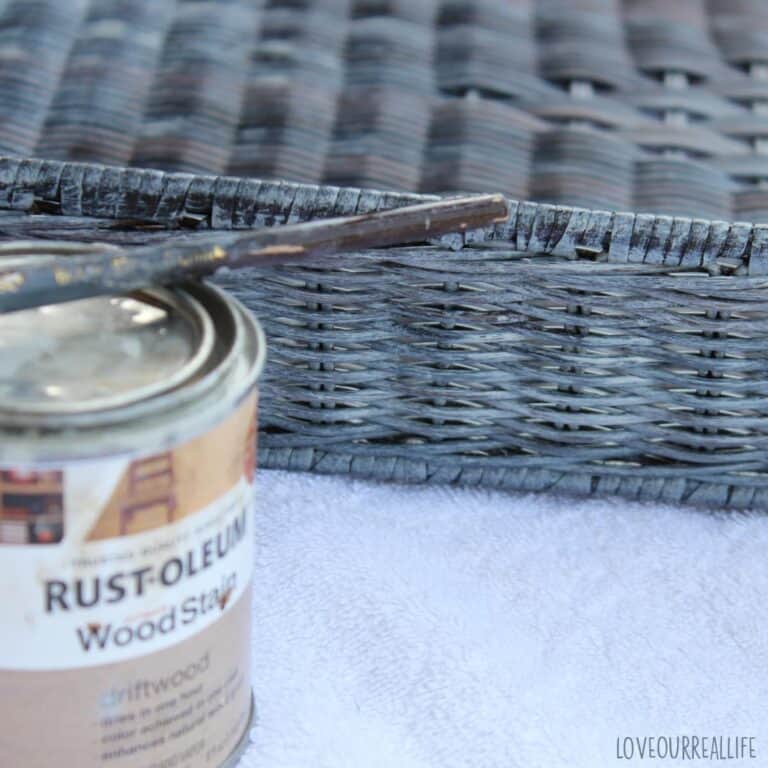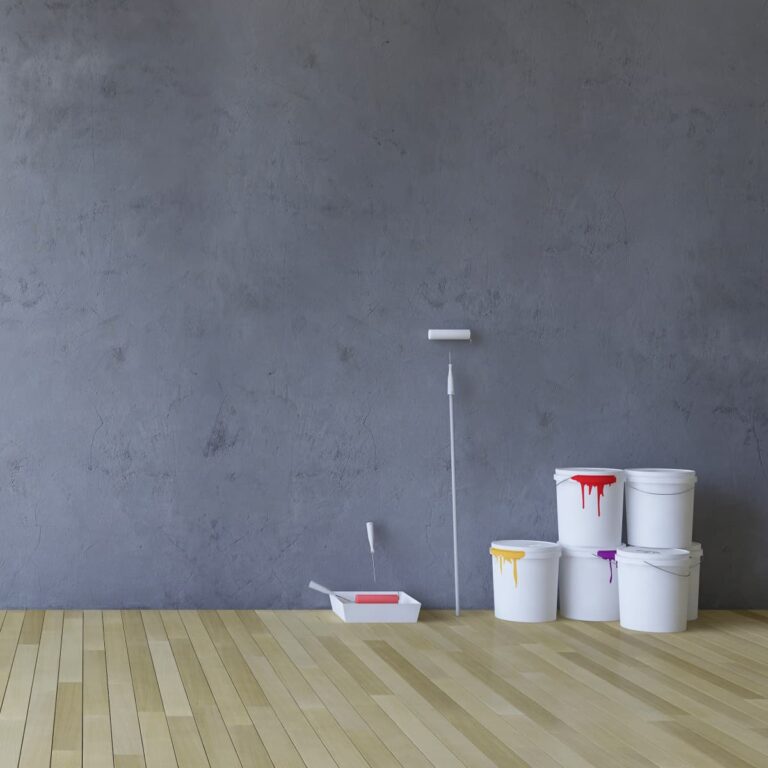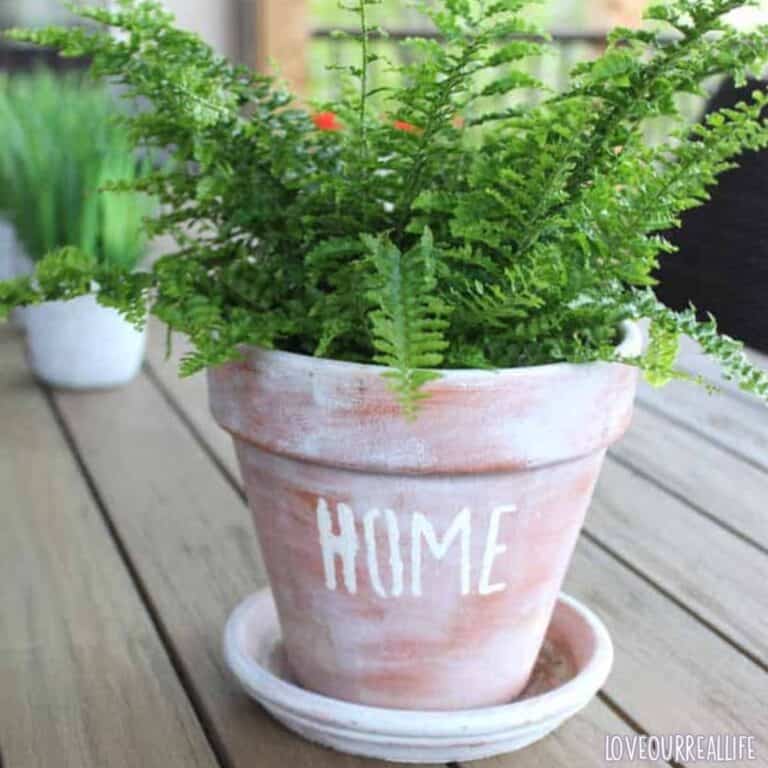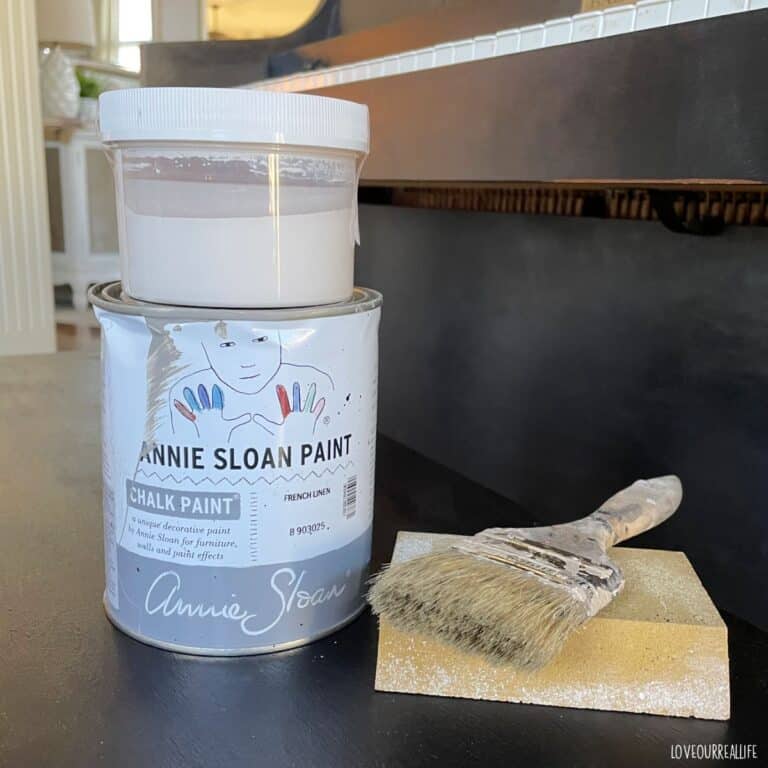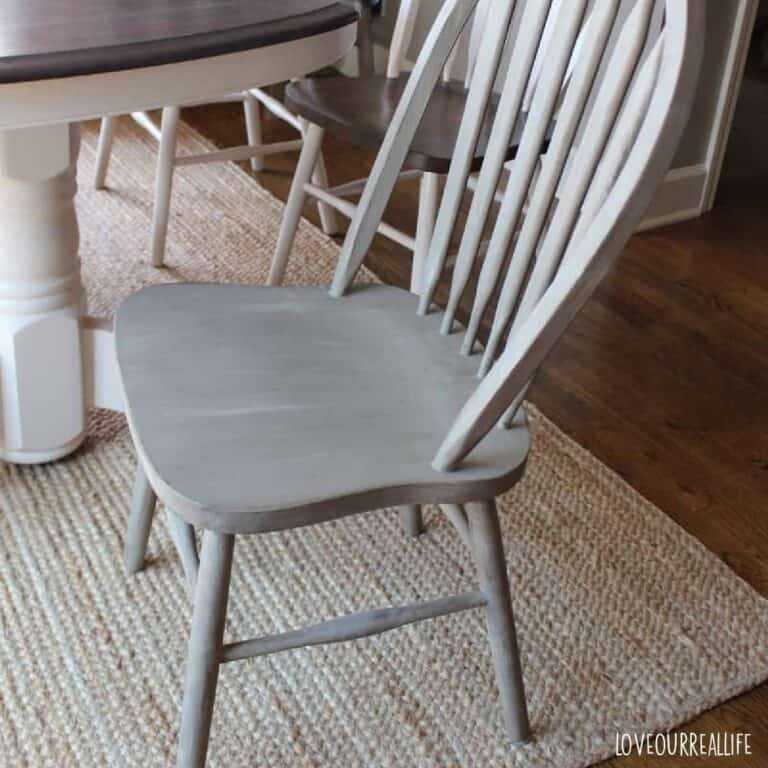How to Paint on Wood with Acrylic – 8+ Tips
Using wood as a canvas for your acrylic paints can result in a gorgeous piece of art. However, it is crucial that you follow all the necessary measures to ensure your painted wood ends up looking just right. So, how do you paint on wood with acrylic?
You can paint on wood with acrylic by first ensuring you choose the right art supplies. Next, prepare your wooden surface for the paint by cleaning it thoroughly, sealing, sanding, and priming the surface. Finalize your art project with a finishing seal.

Although painting on wood with acrylic may sound like an easy task, there are multiple steps needed to ensure you achieve the best results possible.
But it is definitely something even beginners can do!
If you are interested in learning more about how to paint a piece of wood that will last for a long time, read on.
Get more tips for painting projects here.
1. Choose the Right Paints
Before you even consider starting the process of painting on wood, it is essential to have the right equipment for your wood crafts. As with all diy projects, prep is key.
The first item you need to choose is the type of paints you would like to use on your art project.
The best acrylic paint to use is one designated for wood use.
There are dozens of different types of acrylic paints to choose from, so it is vital to ensure you select an acrylic that is made specifically for painting on wooden surfaces.
A good option with a variety of colors is the Apple Barrel acrylic paint set found here on Amazon. They have several bright colors and is a great option due to it’s reasonable price point.
Art stores, craft stores, and/or your local hardware store should have a variety of acrylic paint options to choose from.
The other important factor to consider when choosing the type of paint to use is how quickly it dries and whether it is easy to keep it somewhat liquid.
Acrylic paint tends to dry rather quickly in general, so you will need paint that has a thin consistency.
Alternatively, you can thin out your paint by dipping your paintbrush into a cup of water between every couple of uses while painting.
Doing so will help keep your paint the same consistency throughout the process and will also allow you to easily change between colors.
2. Choose the Right Brushes
The other major decision you need to make before starting to paint your wooden panel is the type of brush you are going to use.
While it’s best not to use cheap brushes for any painting project, it is imperative to use high-quality brushes when painting on a wooden surface.
Good brushes are necessary because the bristles on lower-quality brushes come loose easily while you are painting and can end up stuck in the paint on your final product.
Cheap brushes also tend to leave streaky brush strokes on wood even if it is a smooth surface.
This is especially noticeable when using only a few paint coats, which is another reason why getting a good-quality brush is so important.
For best results, choose paint brushes made from natural hair or synthetic materials that will not come loose while in use. You will also want to consider using a soft, flexible brush rather than a stiff one for painting on your wood so that it folds into the surface as you work.
Note: If your wood item is not smooth, you will need to sand it slightly prior to proceeding. No need to spend much time with this, just enough sanding to ensure a smooth surface. Sand with the grain of the wood. 180-grit sandpaper or higher fine grit sandpaper would work well. Wipe away any dust or dirt with a clean tack cloth.
If your wooden piece is already smooth, sanding can be skipped.
3. Clean the Wooden Surface
Once you have all the appropriate tools you need to paint and are ready to begin working on your art project, the next step entails cleaning the wood surface you’ll be using.
It would be best if you started the process of cleaning the wood by brushing off any excess grains or debris.
The simplest way to do this is to:
- Get a cloth made of microfiber or any other material that will not leave lint behind (do not use a paper towel).
- Wet the cloth just slightly, then squeeze out the water, leaving it only slightly damp.
- Wipe the wooden surface until it is free from all dust.
After wiping the wood panel down, run your hand over it to confirm all splinters or grains of wood are gone and that the wood feels relatively smooth to the touch.
4. Seal the Wooden Surface
The next step in the process of painting on wood with acrylic is arguably one of the most vital to the success of your finished project.
This important step entails sealing the wooden surface prior to painting on it.
Sealing your wood is necessary for a number of reasons, but especially when painting with acrylic paints. Whichever sealant you choose will protect the surface of the wood by creating a barrier between the raw outside and the color being put on top.
PVA glue is a popular choice for a sealant on wood prior to using acrylic paints.
Here are some of the upsides of sealing your wood surface and wood items before painting:
- Sealing the wood helps to reduce the possibility of Support Induced Discoloration (SID) from occurring. SID only happens when using acrylic paints. The supports in the wood contain natural impurities that, when mixed with acrylic paint, cause the paint to take on an amber-yellow color. Using a sealant helps to keep the paint separate from those supports thus SID won’t affect your art project.
- Using a sealant on your wood makes it much easier to apply additional paint layers without the wood being affected by the thick amount of paint. If there is too much paint sitting on the wooden surface, a lack of sealant can cause the chemicals to absorb into the wood, rotting it from the inside out.
- Applying a sealant before painting also reduces the chances of the wood warping in intense humidity or heat. Sealing the wood allows your project to have increased longevity and lets you hold onto it for many years without it getting damaged by high temperatures or extreme weather.
Apply one coat of sealer directly onto the raw wood and spread it evenly over the surface using a clean brush.
After sealing the wood for the first time, the first layer will likely have a scratchy texture since the grain of the wood rises up with the initial coat of sealant.
5. Sand Down the Grain of the Wood
Once the initial coat of sealant dries on your wooden panels, it is time to work on sanding down the grain of the wood to make it as smooth as possible.
You can sand it down using fine-grit sandpaper or a sanding sponge, sanding with the direction of the wood grain.
However you choose to do it, the goal is to have a wooden surface that is free of chipping, splintering, or any other bumps that may make painting your art project challenging.
The best way to go through the sealing and sanding process is to apply an initial coat of sealant (thin layer), sand the wood down, then apply a second coat of sealant. No need to sand after the second layer.
Two coats of sealer will ensure the wood panel is wholly protected.

RELATED: Is There a Problem With Using Paint That Smells Sour?
6. Prime the Wooden Surface
After you have completed the sealing and sanding process, the last step to take before beginning your project is priming the wooden surface.
Priming is different from sealing, but it is just as important. While sealant helps protect the raw wood from the paint, a primer helps make the acrylic paint easier to apply.
It also allows the paint to adhere to the wood better.
Another benefit of using a primer before painting on a wooden panel is that the acrylic paint will have the appearance of more vibrant colors – particularly if you’re using light colors that may not stand out.
Vivid colors are always a good idea with any wood project, in my opinion.
The best primer to use prior to acrylic paint work is Golden Acrylic Gesso, found here on Amazon. It can be used as a primer on a variety of surfaces and works very well with acrylic paint as well as oil paint but does have a strong odor.
Apply 1-2 thin coats of primer.
Primed wood will help to make the acrylic painting have a beautiful, smooth finish.
7. Paint a Base Layer, Then Add Details
When it’s time to begin painting, you will want to start with painting a base layer on the wooden surface with the color you would like to have as your background.
This base layer will allow you to test the acrylic on the wood to ensure it is fully prepped and ready to be painted on.
You can then start painting using whatever acrylic paint and brushes you selected for your art project.
If you are planning to paint both sides of the wooden panel, you will need to wait for the first side to dry completely before switching over to the other side.
For best results, wait a bit longer than 20 minutes since acrylic paints take about 20 minutes to dry thoroughly.
RELATED: How to Paint Terra Cotta Pots
8. Put a Finishing Seal Over the Acrylic Paint
The final step to completing your painted wooden panel is to seal acrylic paint with an acrylic sealant. This step is crucial because it helps protect your art project from peeling or chipping.
Some acrylic paints come with a sealant already built into the formulation.
However, if the paint you are using doesn’t contain a sealant, you can choose between a brush-on (using a sponge brush) or spray-on acrylic sealant. While both sealants require different applications, the end results should look the same depending on your chosen finish.
There are many different finishes to choose from, including matte finish, satin, glossy, and high gloss, so select the finish you like best.
Apply a thin coat of the finishing sealant over the acrylic paint, allow this top coat to dry completely, and your art project is finished!
If your project will be for outdoor use or be exposed to much moisture, a polyurethane is a good choice to better protect your hard work.
RELATED: Best Spray Paint for Outdoor Furniture
Final Thoughts
Ultimately, the process of painting on wood with acrylic involves several steps even before you actually begin painting on your wooden surface.
While they are not hard, these steps are necessary as they ensure good paint adhesion and help to keep the wood pristine and more long-lasting.
The extra steps also help ensure that your paint job is as neat as can be and allow your artwork to remain intact for the longest time.
Hopefully you’ll find painting on wood with acrylic paints to be a great experience!
If you are nervous about the project, don’t be. But, if it makes you feel better, practice the above steps on a piece of old wood first, so you feel comfortable before diving in.
How to Paint Wood With Acrylic Paint - Important Tips to Follow

Follow these simple, but important steps to properly paint on wood with acrylic paint to ensure good adhesion and durability.
Materials
- Acrylic paint
- Sandpaper
- Wood panel
- tack cloth / lint free cloth
- Acrylic sealant
- Acrylic primer
Tools
- Paint brush
Instructions
- Select acrylic paint specifically made for wood.
- Select quality paint brushes to reduce chance for brush strokes.
- Sand wood surface slightly if not already smooth using fine grit sandpaper and clean well afterward with tack cloth.
- Thoroughly clean wood surface in preparation for painting project.
- Apply sealant such as PVA glue. Allow to dry and sand between coats. Apply 2 coats.
- Prime wood for better adherence of acrylic. Gesso works well for this.
- Begin painting with acrylics.
- When acrylic paint is thoroughly dried, apply final sealant for improved durability.
Notes
Please read full article for more detailed instructions for painting on wood with acrylic paints.
